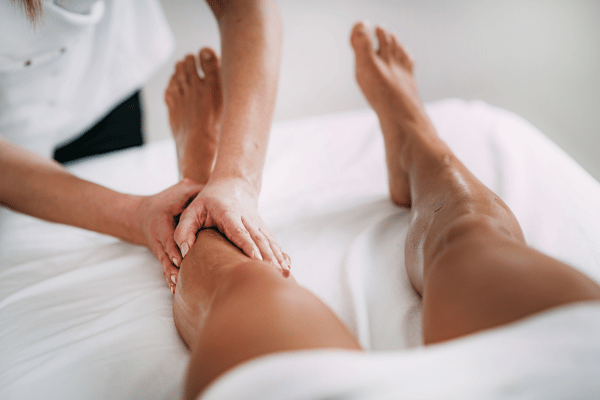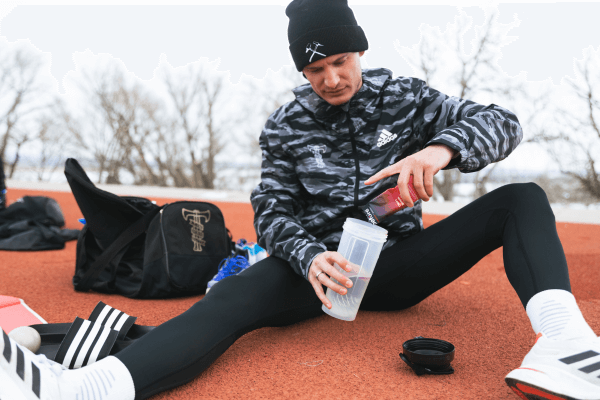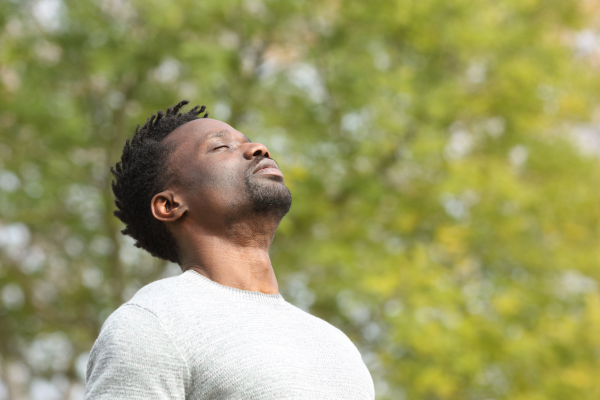If you're looking for a way to get moving more comfortably again, read on to see how massage techniques can help - massage is one of the tools you need to help with athletic recovery.
One of the best things about watching sports on TV is it takes you behind the scenes. And if you’ve ever watched athletes preparing for a big race or teams preparing for a big match there’s one feature common to them all - the massage table.
And there’s a good reason for that.
In the world of high-performance athletics, every edge matters. Proper massage techniques can have a very real effect on an athlete's ability to train, compete and win.
While supplements (like our premium blackcurrant berry powder) support endurance and recovery from the inside, massage does a similar thing from the outside. They both help you perform better but do it in very different ways.
By targeting specific muscle groups, relieving tension, and promoting relaxation, massage can help with warm-up, enhance flexibility and accelerate recovery.
All of this lets athletes train more frequently and at a higher intensity - which is the point, right?
What Is the Effect of Sports Massage on Performance and Recovery?

- Increased Circulation: Massage promotes blood flow to your muscles, delivering more oxygen and nutrients while helping to remove waste products like lactic acid. This improved circulation can reduce muscle soreness and speed up recovery post-workout or competition.
- Enhanced Flexibility: By releasing tight muscles and improving joint mobility, regular massage therapy can help increase your range of motion, leading to more efficient movement patterns and reduced injury risk.
- Reduces muscle soreness and stiffness: By breaking down muscle knots and releasing tension, sports massage can alleviate post-workout soreness and discomfort.
- Stress Reduction: Athletes deal with both physical and mental stress, and massage can help lower cortisol levels (a stress hormone) while boosting endorphin release, helping you feel more relaxed and focused.
These benefits directly contribute to both improved performance during training and competitions, as well as faster, more efficient recovery between sessions.
Recent studies have shown that regular massage can reduce recovery time by up to 30% and improve performance markers in subsequent training sessions.[1]
What Are the Key Types of Massage?
Not all massages are created equal, and different types target specific outcomes for athletes. Here’s a breakdown of the most common forms of massage therapy used by athletes:
- Deep Tissue Massage:
- Purpose: Focuses on realigning deeper layers of muscles and connective tissue. Ideal for chronic aches and tight areas such as the neck, back, or legs.
- Benefit: This type of massage is great for working out knots and relieving chronic muscle tension.
- Swedish Massage:
- Purpose: Uses long strokes, kneading, and circular movements on superficial layers of muscle.
- Benefit: A good option for general relaxation and to improve circulation.
- Sports Massage:
- Purpose: Designed specifically for athletes, this technique combines different methods (like deep tissue and stretching) to address areas of strain due to sport-specific activity.
- Benefit: Sports massage can be used pre-event, post-event, or for maintenance. It’s tailored to the athlete’s needs based on their sport and injury risk.
- Myofascial Release:
- Purpose: Focuses on releasing tension in the fascia (the connective tissue that surrounds muscles).
- Benefit: Helps improve flexibility and mobility, particularly in areas of the body that feel "stuck" or restricted.
- Trigger Point Therapy:
- Purpose: Targets specific trigger points—knots of tension in muscles that can refer pain to other parts of the body.
- Benefit: By releasing these points, athletes can reduce pain and prevent potential injuries.
Are Different Types of Massage Better for Different Sports?
Absolutely! The demands of various sports call for different types of muscle work. Here’s the best type of massage for your sport:
|
Activity |
Massage-Type |
|---|---|
|
|
For athletes involved in long-duration activities, regular Swedish, deep tissue or sports massages can help address overuse injuries and muscle tightness. These sports place a lot of stress on the legs, so targeted massage can focus on improving circulation and preventing injury in these areas. |

|
In power-based activities, muscles are subjected to quick, intense contractions. Myofascial release, trigger point massage and deep tissue massage can help release tightness in specific areas like the hips, shoulders, and back, allowing for better explosive movements. |

|
For athletes in team sports, a combination of Swedish and sports massage is effective. Swedish massage aids in relaxation, while sports massage can address specific areas of strain due to quick changes in direction, jumps, and collisions. |

|
For these athletes, myofascial release and trigger point therapy are key. Releasing tight fascia and muscle knots improves overall flexibility and range of motion, which are crucial for success in these sports. |
What Type of Massage Is Best Before an Event?
Now you've got your sport sorted, it's time to look at the timing. Before a big event, you’ll want a massage that prepares your body for action without causing fatigue. The ideal option is a light, stimulating sports massage.
- Pre-Event Sports Massage: This type of massage uses quick, brisk strokes to warm up the muscles and stimulate blood flow without inducing deep relaxation. It’s designed to energize the body while improving flexibility, loosening muscles, and enhancing the athlete’s mental focus. The goal is to prime the body for activity, not to relax it too much.
- Key Focus Areas: Depending on your sport, the massage will focus on the muscle groups most involved in your activity (e.g., legs for runners or arms for swimmers).
Timing is crucial, too. Ideally, a pre-event massage should be done a few hours before the event to give your muscles time to absorb the benefits and prepare for the session or competition.
What Type of Massage Is Best for Athletic Recovery?
After an event or intense training session, your focus shifts to relaxation, muscle repair, and recovery.
When compared to active recovery, cold therapy and compression garments, Studies have shown that massage "seems to be the most effective method for reducing DOMS [Delayed Onset Muscle Soreness] and perceived fatigue" [2]. The same study found that the most powerful techniques for reducing inflammation were massage and cold therapy.
The best options for post-event recovery include:
- Post-Event Sports Massage: This is a gentler, slower version of a pre-event massage, aimed at soothing sore muscles, reducing inflammation, and improving circulation. It helps drain lactic acid buildup and other waste products that accumulate after strenuous activity.
- Deep Tissue Massage: This is beneficial when you’re dealing with chronic tightness or after a particularly grueling event. The therapist will use deeper pressure to address muscle knots and tension. However, deep tissue massage can cause inflammation, so it is not recommended until at least 48 hours after an event.
- Myofascial Release: If you’re feeling particularly stiff or restricted in your movement, myofascial release can help loosen up the connective tissues, allowing for better range of motion and faster recovery.
For optimal results, timing matters. A recovery massage is most effective 24–48 hours after an event to help your muscles heal and recover without disrupting the natural inflammatory response that aids in muscle repair.
How Often Should Athletes Get Massages?
The frequency of massages depends on several factors, including the type of sport, the intensity of training, and individual recovery needs. Here are general guidelines:
- High-Intensity Athletes (e.g., marathon runners, competitive cyclists): Aim for weekly or bi-weekly massages to stay on top of muscle tightness, injury prevention, and recovery.
- Moderate-Intensity Athletes (e.g., recreational athletes or those training for shorter events): Bi-weekly or monthly massages are typically sufficient to support recovery and performance.
- In-Season vs. Off-Season: During peak competition periods, athletes might benefit from more frequent massages to manage stress and fatigue. During the off-season, monthly maintenance massages can help keep muscles in good condition.
Conclusion
Massage therapy is an essential tool for athletes looking to enhance their performance and recovery. From pre-event stimulation to post-event recovery, different types of massage target specific needs depending on the sport, the intensity of activity, and the individual athlete. Incorporating regular massage into your routine can help you perform better, recover faster, and reduce the risk of injury.
Whether you're a seasoned competitor or new to training, finding the right type of massage and frequency can be the key to unlocking your full athletic potential. So, breathe deep, stretch out, and consider adding regular massage sessions to your game plan—your muscles (and your performance) will thank you!
References
1. Seo BR, Payne CJ, McNamara SL, Freedman BR, Kwee BJ, Nam S, de Lázaro I, Darnell M, Alvarez JT, Dellacherie MO, Vandenburgh HH, Walsh CJ, Mooney DJ. Skeletal muscle regeneration with robotic actuation-mediated clearance of neutrophils. Sci Transl Med. 2021 Oct 6;13(614):eabe8868. doi: 10.1126/scitranslmed.abe8868. Epub 2021 Oct 6. PMID: 34613813; PMCID: PMC8961724.
2. Dupuy O, Douzi W, Theurot D, Bosquet L, Dugué B. An Evidence-Based Approach for Choosing Post-exercise Recovery Techniques to Reduce Markers of Muscle Damage, Soreness, Fatigue, and Inflammation: A Systematic Review With Meta-Analysis. Front Physiol. 2018 Apr 26;9:403. doi: 10.3389/fphys.2018.00403. PMID: 29755363; PMCID: PMC5932411.



